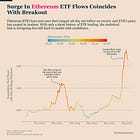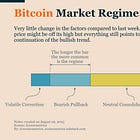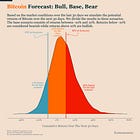A Return of Bitcoin ETF Inflows Makes a Higher Trading Range Possible
Also Is Ethereum Finally Having Its Breakout Moment & Worrying Trend in Core Inflation Metrics
Welcome to Ecoinometrics' Friday edition.
Each week, we analyze the three most critical market signals impacting Bitcoin and macro assets, delivering institutional-grade insights through data-driven charts and analysis.
Today we'll cover:
A Return of Bitcoin ETF Inflows Makes a Higher Trading Range Possible
Is Ethereum Finally Having Its Breakout Moment?
Worrying Trend in Core Inflation Metrics
Today’s signals point to a market at an inflection point. Bitcoin’s short-term outlook has strengthened on renewed ETF inflows and supportive risk sentiment. Ethereum is showing signs it may finally narrow its performance gap with BTC as its own ETFs start to gain traction. At the same time, sticky core inflation keeps the Fed’s policy path uncertain. That’s a reminder that macro conditions can quickly shift the risk-on environment that crypto is enjoying right now.
In case you missed it, here are the other topics we covered this week:
Essential Decision-Making Tools
Bitcoin Market Monitor - Key Drivers in Five Charts:
Bitcoin Market Forecast - Probability Scenarios & Risk Metrics:
Get these professional-grade insights delivered to your inbox:
A Return of Bitcoin ETF Inflows Makes a Higher Trading Range Possible
Bitcoin’s latest breakout attempt is backed by a return of inflows into the ETFs.
We reran our simulations with this new data, and the effect is clear: the expected price range for the next 30 days has moved higher. The model now points to a range of $111K to $131K, with an expected value of $121K.
That’s not far from where we are today, but it’s roughly $10K higher than the projection we had just two weeks ago. The shift reflects the combination of renewed ETF demand and stronger market sentiment.
Right now, three forces are working in Bitcoin’s favor:
Moderate ETF inflows are back.
The Nasdaq 100 is making new highs.
Risk-on sentiment is building as traders anticipate Fed rate cuts later this year.
The alignment of these factors supports the higher target range in our ETF flow model. For short-term tactical positioning, this remains one of our most reliable tools. Public company Bitcoin purchases, by contrast, are more relevant to long-term trends, a topic we analyzed in Wednesday’s issue.
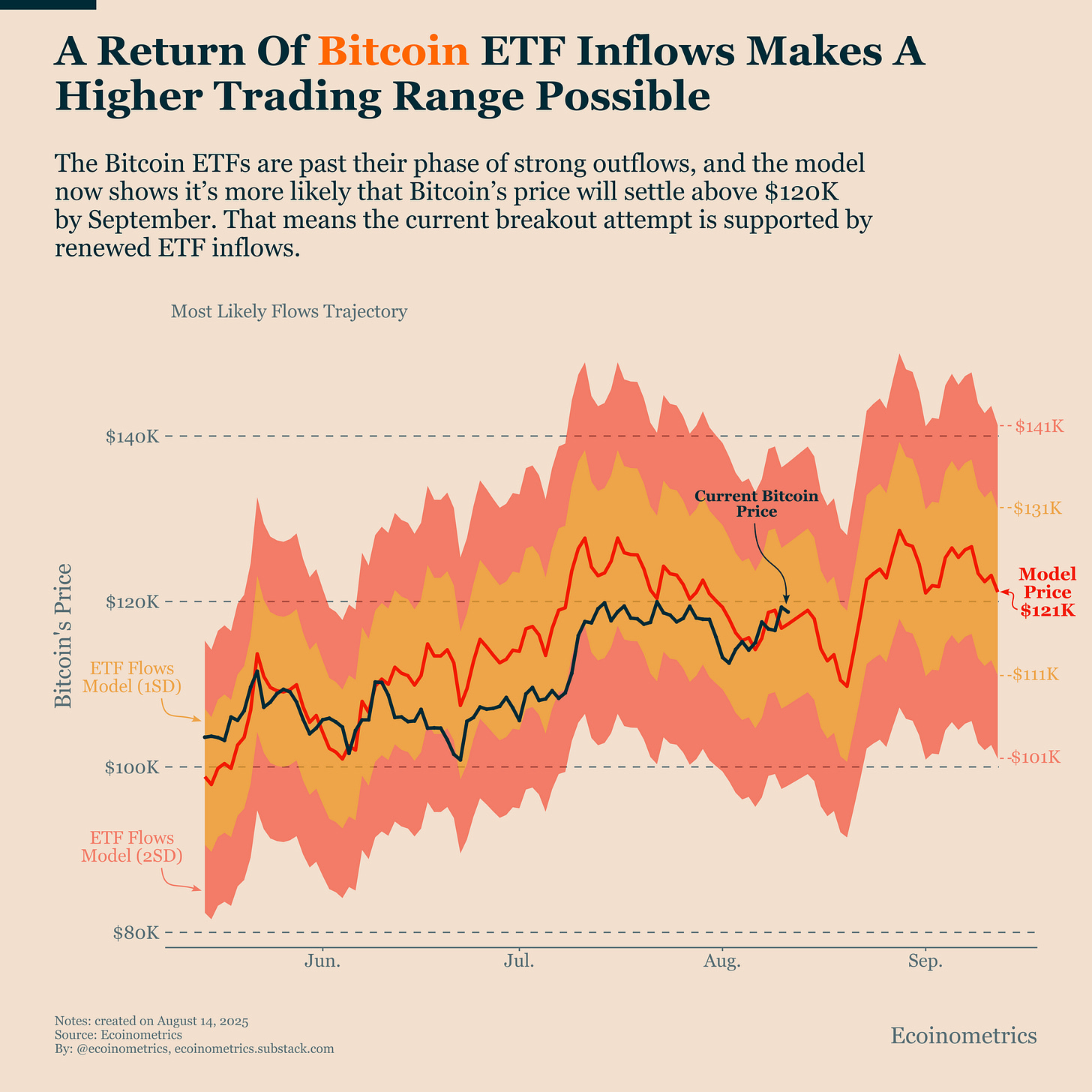
Is Ethereum Finally Having Its Breakout Moment?
Since the bottom of the bear market in late 2022, Bitcoin has surged nearly 600%, setting multiple new all-time highs.
Ethereum, in contrast, is up just over 300% in the same period, half of BTC’s gain, and has spent most of the last two years lagging behind.
That gap could start to close.
The Ethereum ETFs, launched a year ago, are now attracting inflows that resemble the early stages of Bitcoin’s ETF-driven rally in 2024.
For Bitcoin, sustained ETF buying proved to be a powerful price driver, fuelling successive breakouts.
For Ethereum, ETF flows haven’t been as reliable a predictor of near-term returns.
Still, they work as a useful gauge of sentiment, showing when institutional and large-scale investors are willing to put fresh capital to work.
If this momentum holds, Ethereum could be positioned for making new highs.
The key to watch over the next few months is whether inflows can maintain or accelerate. A consistent pattern would suggest the broader market is ready to treat ETH less as a laggard and more as a high-beta play alongside Bitcoin.
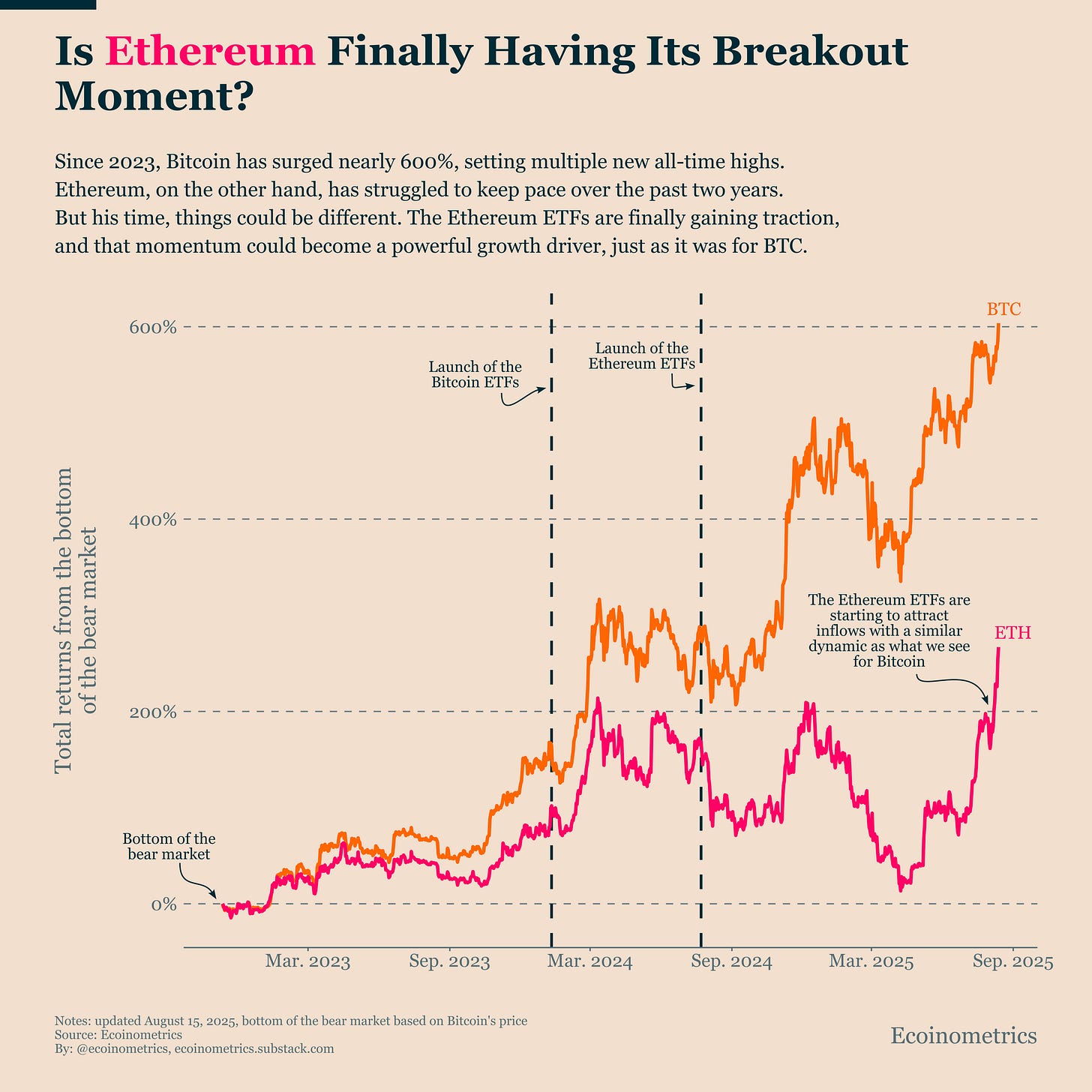
Worrying Trend in Core Inflation Metrics
The Federal Reserve has two main mandates:
Keep inflation running at a moderate pace.
Keep the labor market in the best shape possible.
Right now, those goals are pulling in opposite directions.
On the labor side, continued unemployment claims have been trending higher in recent weeks. That’s a change after a year of stability and could be read as an early warning sign, pushing the Fed toward rate cuts.
On the inflation side, the past two months have shown a more troubling picture. Core services CPI, covering much of the U.S. economy, has ticked higher year-on-year for the second month in a row. This isn’t about tariffs; it’s the kind of inflation driven by wages and long-term service demand, which is much harder to bring down.
The contradiction is clear:
Inflation argues against cutting rates or at least against accelerating cuts.
The labor market argues for easing.
In reality, inflation isn’t surging, it’s more likely stuck on a plateau. And the labor market, while showing some cracks, is still strong by historical standards.
That’s why the Fed’s decision is likely to be as much political as it is data-driven.
Our view: if the Fed sticks to its current guidance of two 25bps cuts this year, Bitcoin should be fine. Anything more would be a bonus. A more hawkish stance would be a massive headwind for BTC.
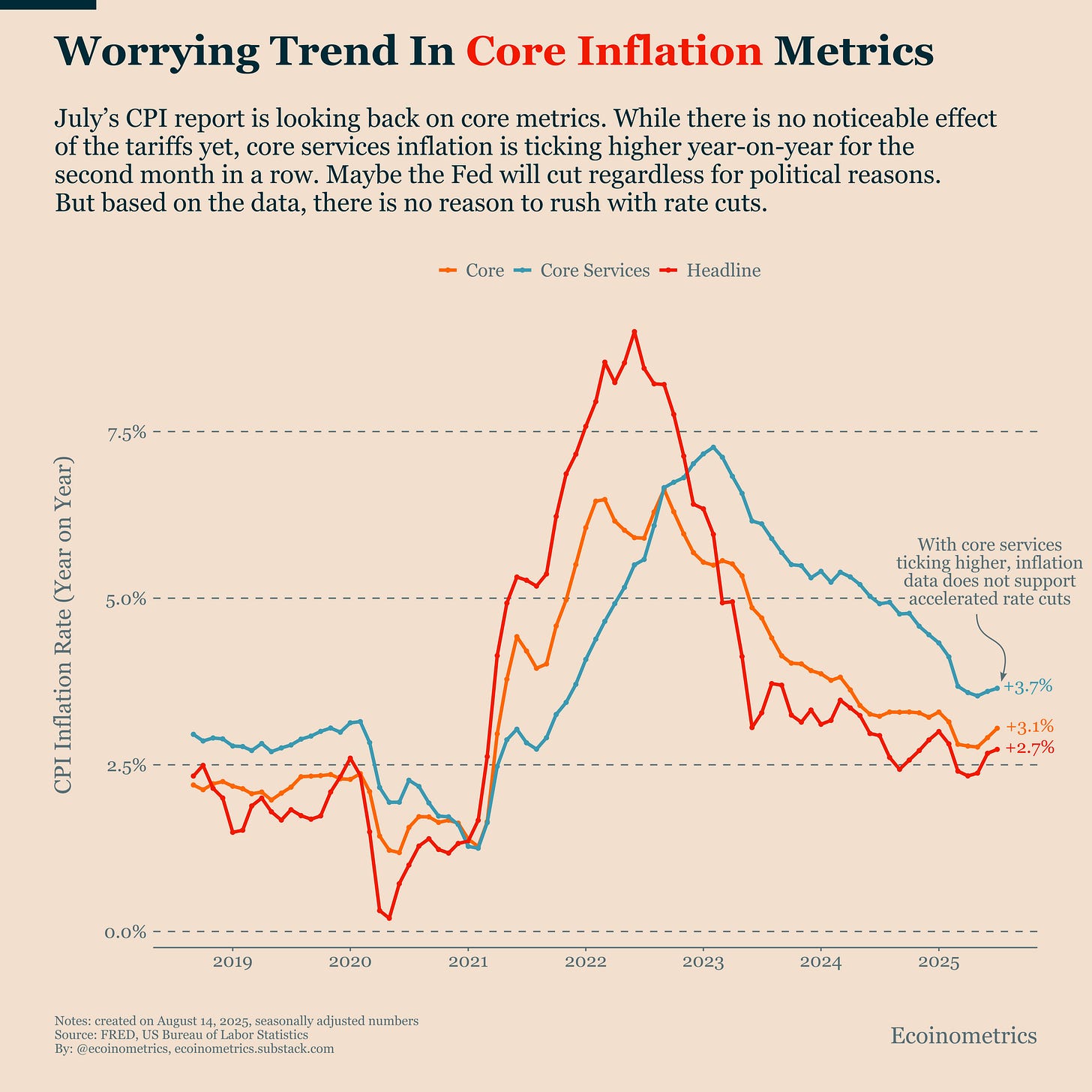
That's it for today. Thanks for reading.
Cheers,
Nick
P.S. Every week, our team conducts extensive research analyzing market data, tracking emerging trends, and creating professional-grade charts and analysis.
Our mission: Deliver actionable macro and Bitcoin insights that help institutional investors and financial advisors make better-informed decisions.
Ready for institutional-grade research that puts you ahead of the market? Click below to access our premium insights.




